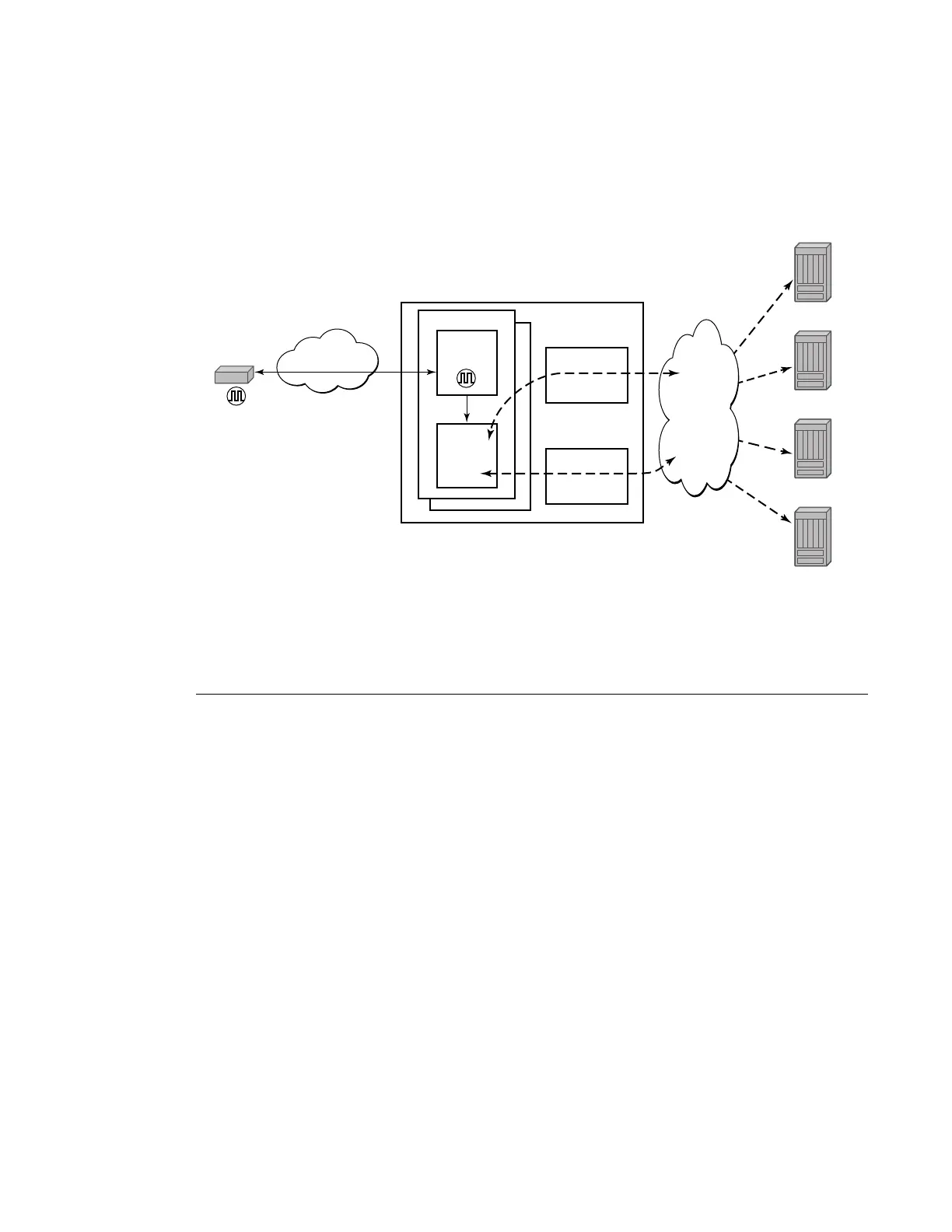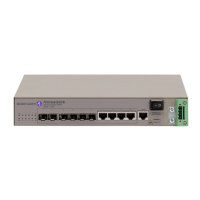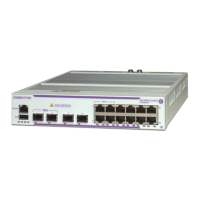Page 250 7450 ESS OS Basic System Configuration Guide
All packets are routed to their destination via the best route as determined in the route table; see
Figure 19. It does not matter which ports are used to ingress and egress these packets (unless port
based time stamping is enabled for higher performance).
Figure 17: Ordinary Master Clock Operation
PTP Boundary Clock for Frequency and Time
The 7750 SR supports boundary clock PTP devices in both master and slave states. IEEE 1588v2
can function across a packet network that is not PTP-aware; however, the performance may be
unsatisfactory and unpredictable. PDV across the packet network varies with the number of hops,
link speeds, utilization rates, and the inherent behavior of the routers. By using routers with
boundary clock functionality in the path between the grand master clock and the slave clock, one
long path over many hops is split into multiple shorter segments, allowing better PDV control and
improved slave performance. This allows PTP to function as a valid timing option in more
network deployments and allows for better scalability and increased robustness in certain
topologies, such as rings. Boundary clocks can simultaneously function as a PTP slave of an
upstream grand master (ordinary clock) or boundary clock, and as a PTP master of downstream
slaves (ordinary clock) and/or boundary clocks.
TDM/SyncE
MDA
Central
Clock
1588
Clock
PTP Slave
PTP Slave
PTP Slave
PTP Slave
MDA
PRC
CPM A
B
OSSG740
Packet
Network

